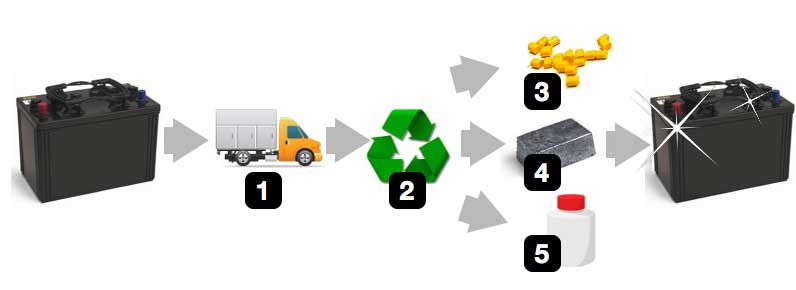As the winter months creep ever closer, we hear more and more from customers about their concerns over not getting a good cold cranking amp (CCA) rating when testing their group 31 stud top batteries.
Nearly 100% of the time, they are not connecting the MIDTRONICS tester correctly. Now, it’s a common mistake to use the stud as the connection point – but, the problem with this is the stud is made of steel which prohibits the tester from getting accurate results.
Let’s take a look at two different ways to test for your battery’s CCA rating, and why testing even matters.
Why You Should Test For Your CCA Rating
The CCA rating is used to determine a battery’s ability to start an engine in a cold environment.
The higher the CCA rating of the battery, the better the battery will be at starting an engine in a wintery climate. Testing for your battery’s CCA rating is important throughout the life of the battery. This is because as the battery ages, its starting power begins to deteriorate.
Using a post adaptor
- Before getting started with any battery test or charging process, it’s always a good idea to clean the battery with a wire brush and a cleaning mixture of baking soda and water. Using a clean, dry cloth to make sure the battery is dry and free of debris.
- Connect the post adapters. By not using the post adapters you will receive inaccurate results. Even on a new battery, the posts can be worn and dirty which prohibits accurate testing.
- When connecting the adapters, make sure you do not tighten more than a ¼ turn to avoid damage.
- Make sure the adapters are securely touching the lead pad below the stud (if they aren’t, you won’t get an accurate reading).
- To connect the tester, attach the red clamp to the positive terminal and the black clamp to the negative terminal.
- Most testers will provide a message if the clamps are not connected properly. To test for proper connection, wiggle, or rock, the clamps back and forth. If you receive a message to “ Check Clamps” or “Wiggle Clamps” you will need to clean the terminals and reconnect the clamps.
Connecting Directly To The Lead Pad
- Cleaning the battery is always the first step to any procedure involving a battery.
- Locate the lead pad which is located directly below the studs.
Pro-Tip: Connecting directly to the lead pad is the best way to connect to a Group 31 stud type battery. The studs are not meant for directing an electrical current and are therefore unreliable as a connection point.
- Attach the red clamp to the lead pad under the positive stud and the black clamp to the lead pad under the negative stud.
- Check to make sure you have a good connection by wiggling the clamps. If the tester sends back a message to “Check Clamps” or “Wiggle Clamps” you will need to make sure the lead pads are free of dirt and debris and re-attach the clamps.
For more, check out this video to see step by step instructions on How To Test A Group 31 Battery.




Northeast Battery, a Stored Energy Holdings, Inc. Company